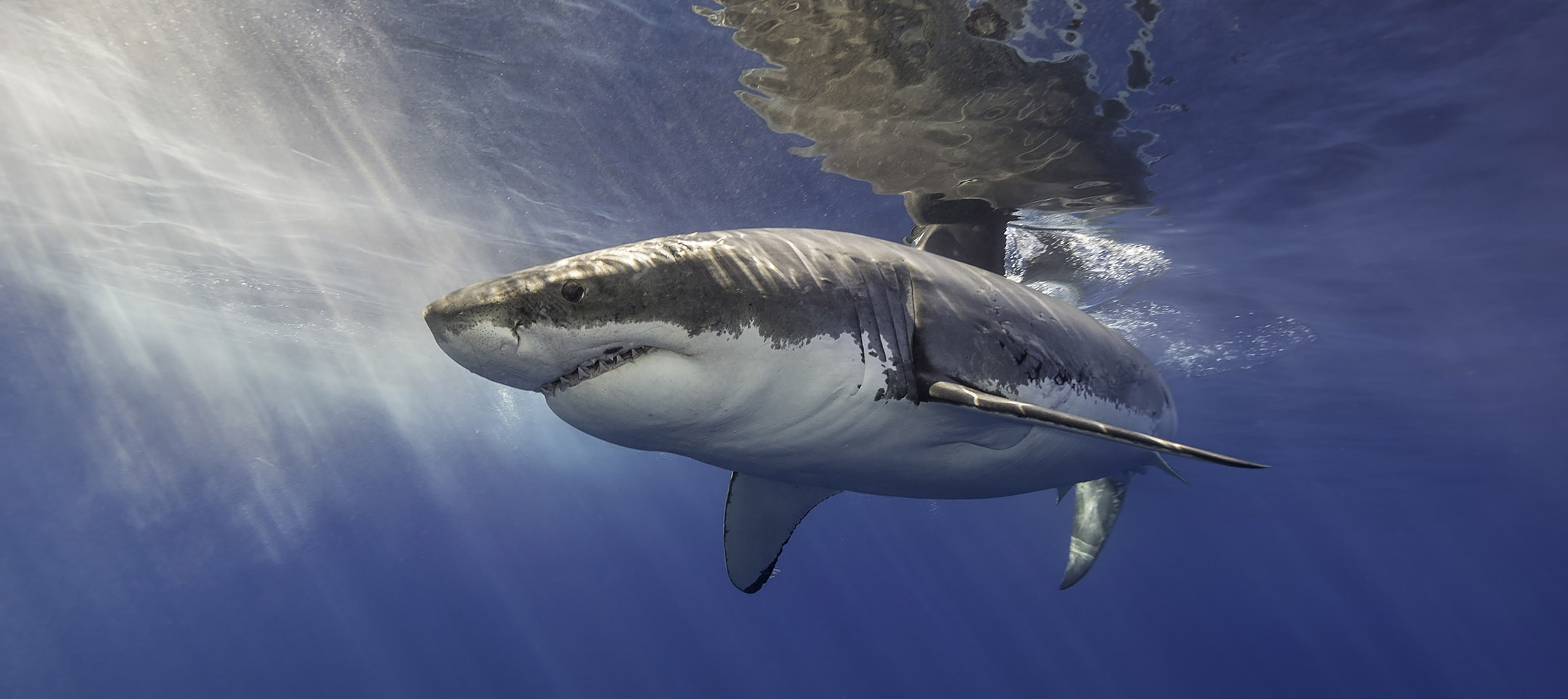Great white sharks in Guadalupe
Guadalupe is not your usual diving destination – it is one of the world’s most outstanding great white shark cage-diving destinations. The two main reasons for such an illustrious title are the unprecedented large number of great whites in the area and the crystal clear blue waters that open a window onto the unparalleled view of the ocean below.

Cage diving with great white sharks
These great predators of the oceans can be encountered in an “intimate” setting in extreme proximity, from within the safety of cages submersed, sometimes up to 10m deep into the sea. This way sharks can be observed safely and in their own natural environment. It is truly a thrill of a lifetime to be able to get so close to some of the grandest hunters in the world.
Cage diving is strictly regulated. Diving is only permitted within enclosed cages. Divers must remain within the cage at all times. No body parts or equipment (such as camera) are permitted outside of the cage. For cage diving hookah air supply (surface-supplied air) is used.
When cages are submersed, the sharks can be observed in their natural habitat, there is no need to lure them with chumming or baiting. Actually baiting or feeding is illegal. Chumming is not considered to be feeding as the mix of fish granules and water simply give the sharks a scent. Chumming is used sometimes for surface cage diving to get the sharks closer up to the surface.

Diving season in Guadalupe
The best time to visit Guadalupe Island is from August to October when weather conditions are the most favourable. Mean temperatures are around 19-21C (66-70F), ideal to attract great whites. Weather during the day is mostly sunny and warm but at night temperatures can drop to about 16C (61F). From July to the beginning of September young male sharks arrive in the area, followed by female sharks from mid-September until the beginning of November. The biggest sharks arrive in October and November (the large females are affectionately called Big Mommas) and stay until December to feast on elephant seals.
While this period is most ideal for sharks, it is also the season for hurricanes. It is advisable to purchase travel insurance with full coverage in case of trip cancellation due to dangerous weather conditions.
(In November the northerly winds begin to blow and since navigation between the island and the mainland is in a west-east direction, boats would get hit hard by the winds from the side, making sailing treacherous.)
Other attractions
Cage diving liveaboard trips usually last about 5-6 days. Many travellers decide to extend their stay and visit the coastal areas of Mexico, especially the Sea of Cortes, for some scuba diving.
Guadalupe Island
The volcanic island of Guadalupe lies about 240km off the west coast of Baja Peninsula in the Pacific Ocean. It measures 35km in length and 9.5km in width and is made up of volcanic ridges. The island boasts a rugged landscape, its southern part completely barren and its northern part embalmed with fertile valleys. Guadalupe became a nature conservancy in 1928, making it one of the oldest ones in Mexico. Since 2005 it has been enjoying the important status of a biosphere reserve.


